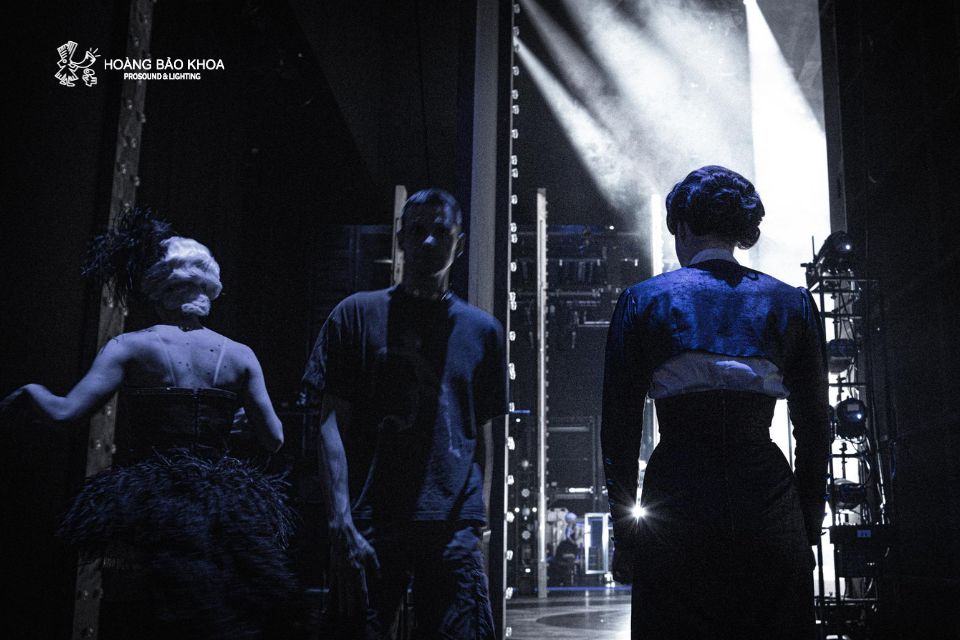Selecting the right microphone is a fundamental yet crucial step in any professional audio setup or recording studio. Understanding microphone types, technical specifications, and evaluation criteria helps you make informed decisions—avoiding wasted investment while optimizing sound quality.
In this guide, Hoang Bao Khoa explains how to choose professional microphones, covering dynamic, condenser, and ribbon types, selecting the appropriate polar pattern, and understanding concepts like proximity effect and phantom power to match the microphone to your recording or live performance needs.
There are several types of microphones, each with unique characteristics suitable for different applications:
- Dynamic Microphone: uses a voice coil and magnet; very durable, handles high SPL, ideal for live performances or loud sources.
- Condenser microphone: lightweight diaphragm, high sensitivity, perfect for capturing detailed high-frequency sound.
- Ribbon Microphone: thin ribbon diaphragm, produces warm and smooth sound; often used to soften harsh sources or reduce brightness.
2. Selecting a Mic Based on Frequency & Acoustic Environment
When choosing a microphone, consider the acoustic environment (distance to the source, room reflections) and how the mic "perceives" sound:
Free-field vs Diffuse-field:
- Free-field mics are designed for direct sources dominating the sound, with flat high-frequency response.
- Diffuse-field mics are designed for reflective environments, often with high-frequency boost to compensate for distance placement.
Maximum SPL: For strong sources ( Drums, amps), choose a mic that can handle high SPL to avoid distortion.

3. Polar Patterns
Polar pattern describes how a mic "hears" sound from different directions – selecting the correct pattern greatly affects recording quality:
- Cardioid: common, picks up sound primarily from the front, reduces rear sound – good for isolating sources.
- Omnidirectional: captures sound equally from all directions; no proximity effect.
- Figure-of-8: picks up front and back, rejects sides – suitable for stereo or eliminating unwanted sources.
Many multi-pattern microphones allow switching between cardioid, omni, and figure-of-8 for flexible use.
4. Proximity Effect
When a mic is placed very close to the source (e.g., vocals), some mics boost low frequencies – this is the "proximity effect".
- Use low-cut filters if you need to reduce bass when close.
- Choose an omni pattern if you want minimal proximity effect.
5. Phantom Power
Many condenser microphones require phantom power (48V) to operate. Ensure your mixer or preamp provides stable and compatible power.
6. Choosing a Mic for the Source
Each source (vocals, instruments, brass, amps) has its own characteristics – select a mic that complements the source without exaggerating weaknesses:
- Bright or harsh sources → consider a smoother mic (e.g., ribbon) to balance the tone.
- Loud or dynamic sources → choose a mic capable of handling high SPL to prevent distortion.
7. Importance of Room Acoustics
The recording environment greatly affects sound quality:
- Room architecture, reflections, and absorption change how a microphone picks up sound.
- In highly reflective rooms, use cardioid mics and acoustic treatment (blankets, curtains) to reduce reflections.
- Mic placement (distance, angle) is critical – it acts as the "natural EQ" of the source. Mic placement can impact ~20% of the recorded sound quality.
8. Summary & Recommendations
- There is no "perfect mic" for every application – selection is a balance of mic type, polar pattern, technical features, and environment.
- Understanding SPL, polar pattern, and proximity effect helps match the mic to the source.
- Always test the mic if possible – listening and experimenting with placement ensures the best choice.
- Ensure stable phantom power if required and pay attention to mic positioning to minimize room reflection effects.
For professional microphone consultation, contact Hoàng Bảo Khoa to receive expert advice from experienced audio engineers.